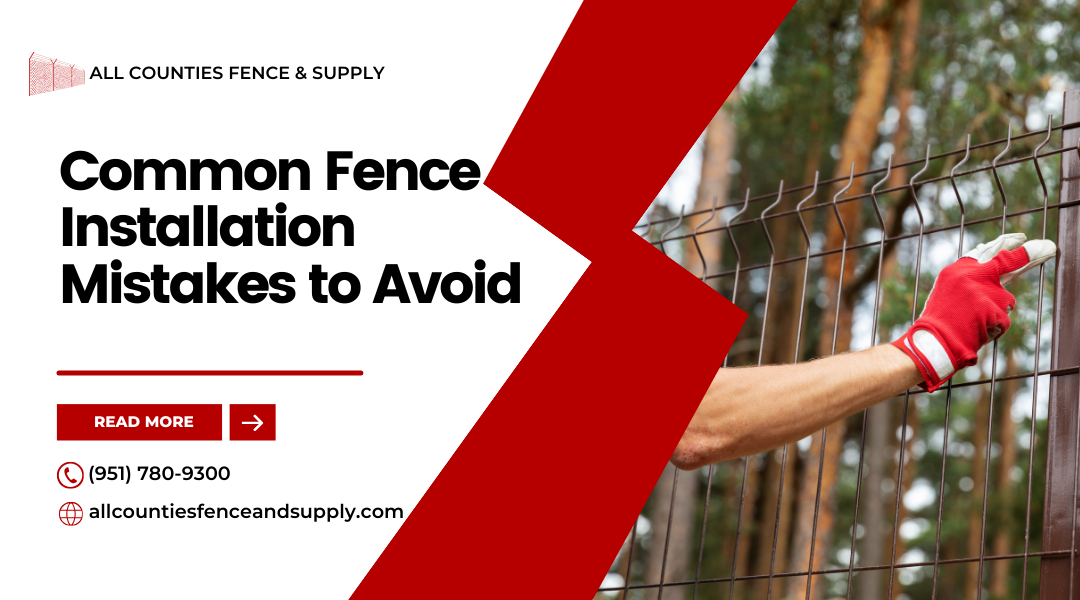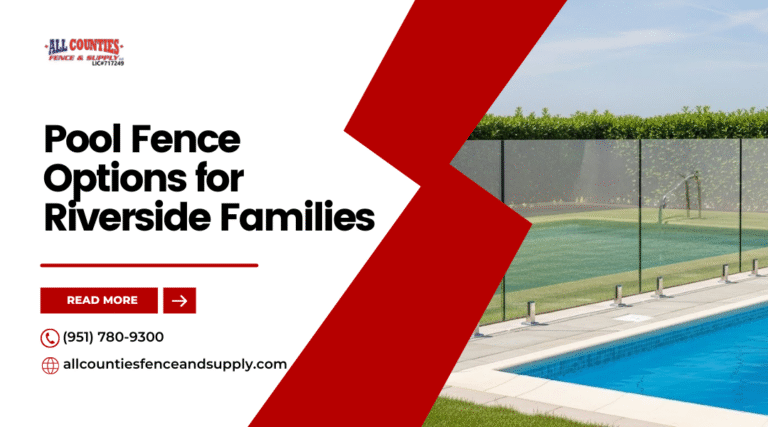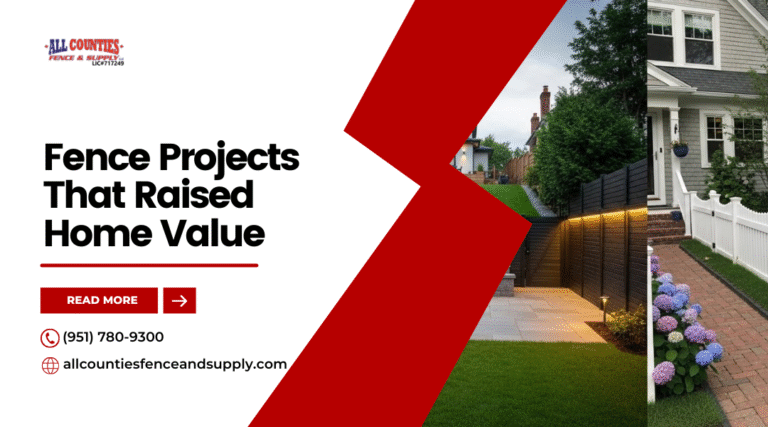Installing a fence can be a rewarding endeavor, providing privacy and security for your property. Avoiding common fence installation mistakes can save you time, money, and frustration in the long run. Whether you’re a DIY enthusiast or hiring a professional, understanding these pitfalls is essential to ensuring your fence looks great and functions effectively.
You might be surprised to learn that many errors occur during the initial planning and installation phases. From incorrect property line assessments to using improper materials, these issues can lead to costly repairs and disputes with neighbors. By being informed and proactive, you can sidestep these challenges and achieve a successful fence installation.
This article will guide you through the most common mistakes made during fence installation and offer practical tips on how to avoid them. Get ready to enhance your property with a fence that meets your needs while ensuring peace of mind throughout the process.
Understanding The Importance Of Proper Fence Installation
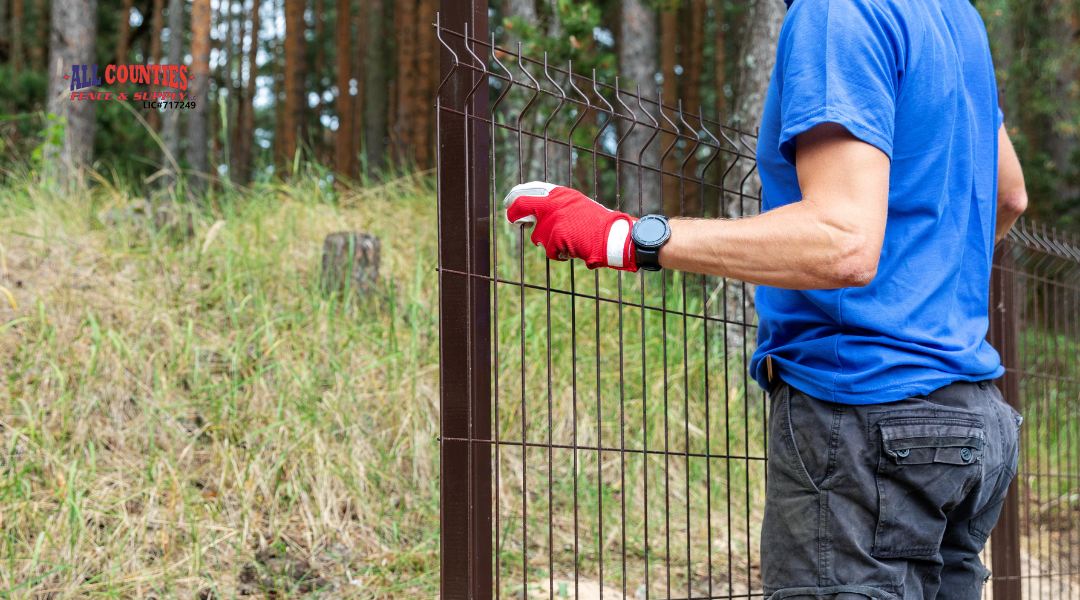
Proper fence installation is crucial for several reasons. It ensures your fence meets both your needs and legal requirements. This includes adhering to local regulations and obtaining necessary local permits.
First, accurately assessing your property boundaries is essential. Placing a fence too close to a neighbor’s land can lead to disputes and might require costly adjustments. Always consult your property survey before beginning installation.
You should also consider utility lines. Before digging, check for underground utilities to avoid accidents. Contact your local utility companies to mark these services.
The height and style of your fence are equally important. If privacy is your goal, ensure you choose the right fence height. Some local regulations might dictate restrictions on how high your fence can be, particularly for privacy fences.
Additionally, the selected fence style can affect maintenance and aesthetic value. A well-chosen fence enhances your property’s curb appeal while providing security.
In summary, investing time in proper installation not only prevents future disputes but also optimizes your fence’s functionality and appearance. Taking these factors into account will lead to a successful and lasting fence installation.
Top Common Fence Installation Mistakes
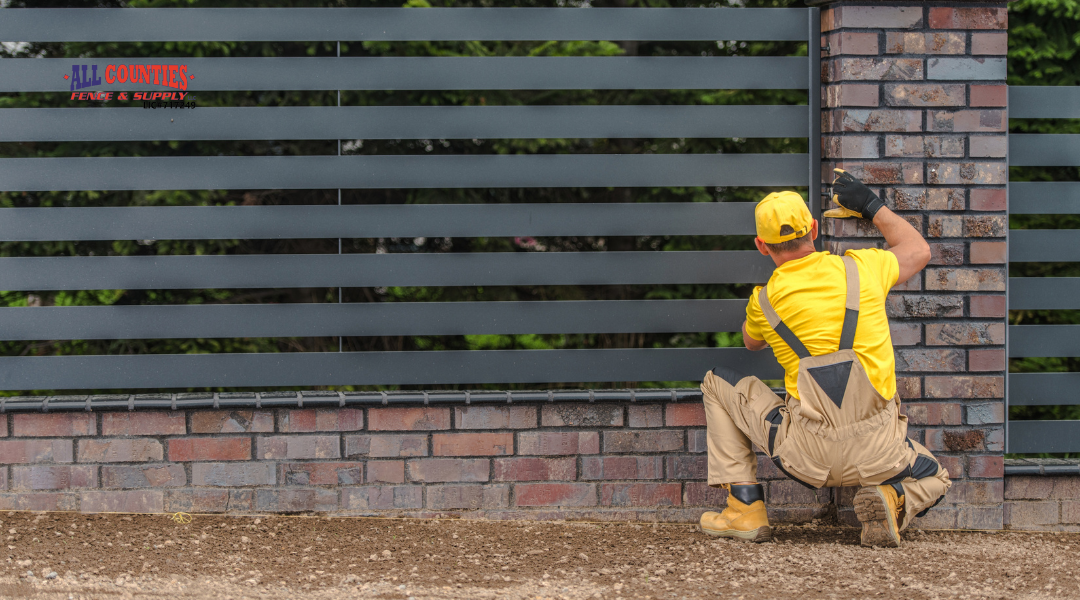
When installing a fence, it is crucial to be aware of common mistakes that can lead to expensive corrections and unsatisfactory results. Understanding these pitfalls will enhance your project, ensuring a durable and well-aligned fence that meets your needs.
Choosing The Wrong Type Of Fence For Your Property
Selecting an inappropriate fence type can undermine your property’s functionality and aesthetics. Assess your specific needs, such as privacy, security, and durability, before making a decision. For instance, wooden fences offer elegance but may require more maintenance compared to vinyl or metal options.
Consider the climate and environment; some materials perform better in certain conditions. A fence that deteriorates quickly can lead to additional costs in repairs or replacements. Therefore, evaluate all variables before settling on a type of fence that suits your lifestyle and property.
Incorrect Fence Post Spacing
Proper fence post spacing is essential for stability and aesthetics. Generally, posts should be spaced between six to eight feet apart, depending on the fence type. Inadequate spacing might lead to a wobbly fence while excessive space could compromise its strength.
You should mark the post locations clearly before installation. This ensures that each post remains aligned correctly, maintaining an even fence line. Carefully measuring and adjusting, if necessary, can prevent distortion and improve the overall quality of your fence.
Failing To Dig Deep Enough For Fence Posts
Digging sufficiently deep for fence posts is critical for maintaining stability. A common mistake is to assume a shallow hole will suffice. Posts should be buried at least one-third of their height to ensure they remain anchored against wind and soil pressure.
For example, if your fence is six feet tall, the post should be at least two feet deep. Shallow posts may wobble or shift over time, leading to structural issues. Always check local guidelines for specific depth requirements based on soil types and local weather conditions.
Not Accounting For Local Building Codes And Regulations
Each locality has specific building codes and regulations that govern fence installation. Ignoring these guidelines can lead to violations, resulting in fines or needing to remove the fence. Before installation, ensure you have the necessary permits and understand zoning laws.
Fences might need to adhere to height limitations or specific materials that comply with neighborhood aesthetics. Consulting local regulations will prevent future complications that could arise from non-compliance, such as disputes with neighbors or legal repercussions.
Improper Fence Alignment And Uneven Ground Issues
Maintaining a straight fence line on uneven terrain is challenging but crucial. An improperly aligned fence not only looks unappealing but can also compromise its structural integrity. Use string lines or laser levels to ensure your fence remains straight across varying elevations.
Additionally, you should consider methods for leveling the ground if it is particularly uneven. This can involve grading or using retaining walls to create a more compatible landscape for your fence. Addressing these issues at the outset will save you time and effort later on.
Skipping Proper Fence Post Installation Techniques
Proper installation techniques directly impact the longevity and stability of your fence. Secure each post in place with concrete or gravel for added support. This prevents movement and ensures your fence withstands environmental stressors.
For the best results, tamp down the soil around the posts as you fill the holes. This technique keeps the posts firm and reduces settling over time. Prioritize these installation methods to ensure your fence remains durable, effectively serving your property’s needs without requiring frequent maintenance or repairs.
How To Avoid These Common Fence Installation Mistakes
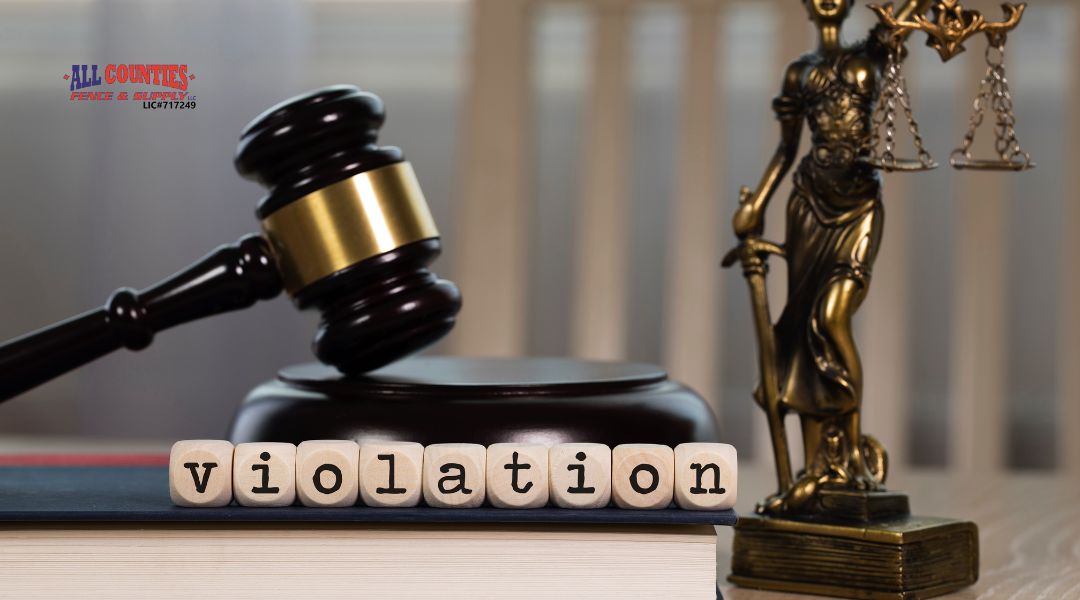
To successfully install a fence, you must take several preventive steps. Utilizing professional advice, meticulous planning, and quality materials will help you sidestep common pitfalls and ensure a resilient structure.
Consult A Fence Installation Expert
Hiring a knowledgeable professional can save you time and resources. Experts bring experience and can offer insights on choosing the right fencing material for your needs, be it a wooden fence or aluminum fences. They understand local regulations and can help you avoid disputes with neighbors.
Discuss your fence design and desired height to determine the best approach. Additionally, an expert can assist with tricky elements like gate installation and make recommendations regarding proper installation techniques. Their expertise may also identify potential problems that you might overlook, ensuring a smoother installation process.
Measure And Mark Before You Dig
Accurate measurements are essential in fence installation. You should mark your property lines before starting. Use stakes and string to outline the proposed fence area, ensuring it aligns with your property boundaries. This practice prevents unpleasant disputes with neighbors concerning boundary lines.
The next step is to measure the space for each fence post hole. Use a tape measure to gauge the distance between posts, typically ranging from 6 to 8 feet. Mark these points clearly. Taking the time to measure correctly will minimize adjustments during and after installation, guaranteeing your fence looks straight and professional.
Use Quality Materials And Tools
Investing in quality materials and tools is crucial for a durable fence. Treated wood is recommended for wood fences exposed to weather to increase longevity. If you choose metal fences, ensure they are resistant to rust and other elements.
Using sturdy materials helps prevent frequent repairs and replacements. Additionally, reliable tools, along with proper handling techniques, will make the installation process smoother. Ensure you have a level, post hole digger, and other essential tools on hand. Quality equipment ensures precision during installation.
Follow Local Regulations And Building Codes
Adhering to local regulations is essential to avoid fines or forced removal of your fence. Before installing, check local zoning laws, which dictate property line rules, height restrictions, and fence materials permitted in your area. Understanding these regulations can guide your design choices effectively.
Some communities may require permits for fence installation. Contact your local building department to clarify these requirements. Following protocols can prevent misunderstandings and legal issues, allowing you to enjoy your fence without restriction.
Plan For Post Holes And Proper Depth
Proper installation of your fence posts is vital to maintain structural integrity. Each post should be set in its hole at least one-third of its total height. For example, if you are installing a four-foot fence, the posts should be set in holes that are at least two feet deep.
When digging post holes, consider the conditions of the soil. Loamy or sandy soils may require different methods than clay-heavy ground. Ensure that you have enough gravel at the bottom of each hole for drainage. This helps prevent rotting and keeps your wooden or metal fences stable over time.
Check For Proper Fence Alignment And Ground Preparation
Before securing your fence, verify that everything is aligned correctly. Use a level to ensure that each post sits straight and at the desired height. Misalignment can lead to a visually displeasing structure and compromise the fence’s effectiveness.
Additionally, prepare the ground by clearing debris and leveling the area where the fence runs. If the terrain is uneven, make adjustments to ensure a level installation. Aligning the gate installation with the rest of the fence is particularly important for functional purposes. Taking these steps will enhance the aesthetic and functional quality of your fence.
Expert Tips For Successful Fence Installation
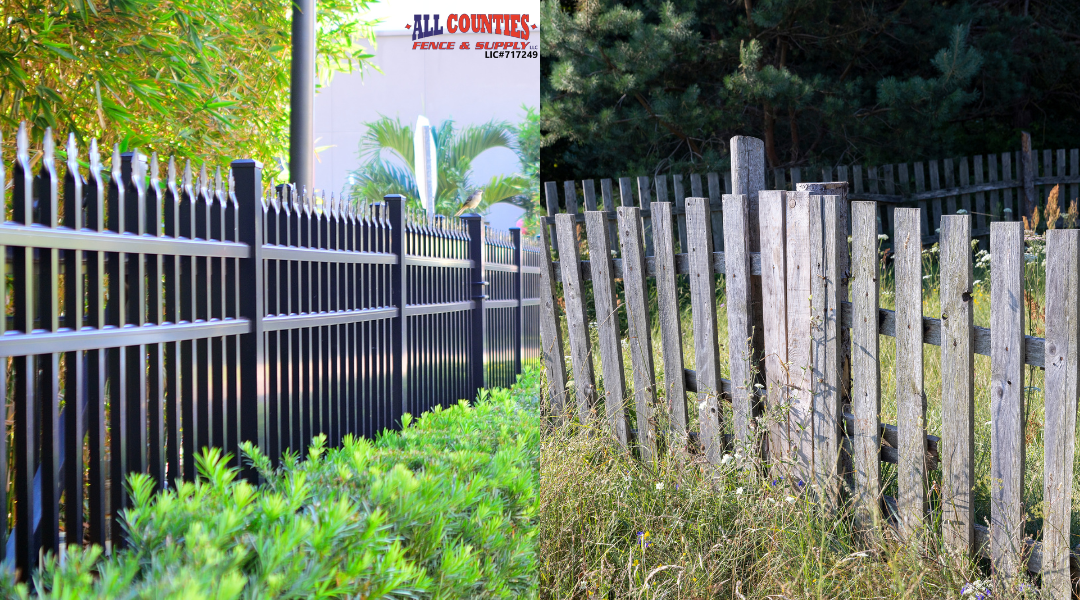
To achieve a successful fence installation, it’s essential to consider various factors that can affect both the process and the longevity of your fence. These tips focus on timing, testing, and ongoing maintenance to help you make informed decisions.
Consider Seasonal Weather And Timing
Timing plays a significant role in the success of your fence installation. Weather conditions can affect the ground’s stability and the materials’ performance.
- Spring and Fall are ideal for installation due to moderate temperatures and consistent moisture levels.
- Avoid Winter; frozen ground can make digging difficult, while extreme heat in summer can weaken some materials.
Additionally, local climate conditions impact how quickly soil can shift after installation. Check the weather forecast before starting, ensuring conditions are stable, and consider seasonal changes for potential maintenance needs.
Test The Fence Before Finalizing Installation
Before completing the installation, conduct a thorough test to confirm that your fence meets your expectations.
- Check structural integrity: Ensure all panels are secure and aligned.
- Assess height and width: Confirm that the fence meets your design specifications and local regulations.
Testing now minimizes the chances of costly adjustments later. If possible, have a trusted friend or neighbor review your setup for an additional perspective. You might notice issues that may otherwise go unnoticed, helping you ensure everything is perfect before finalizing.
Maintenance Tips For Long-Term Fence Durability
Proper maintenance is essential for ensuring your fence remains sturdy and visually appealing over time.
- Regular Cleaning: Clear debris and dirt at least twice a year. Use a mild soap and water solution for tougher stains.
- Inspections: Check for signs of rot, rust, or damage every season. Early detection can prevent more extensive repairs.
Consider applying a sealant or stain every few years to protect the material from weather elements, especially if made from wood. For vinyl or metal fences, inspect the hardware regularly to ensure all components remain secure. Investing time in these maintenance needs will extend the life of your fence significantly.
Avoid These Mistakes For A Successful Fence Installation
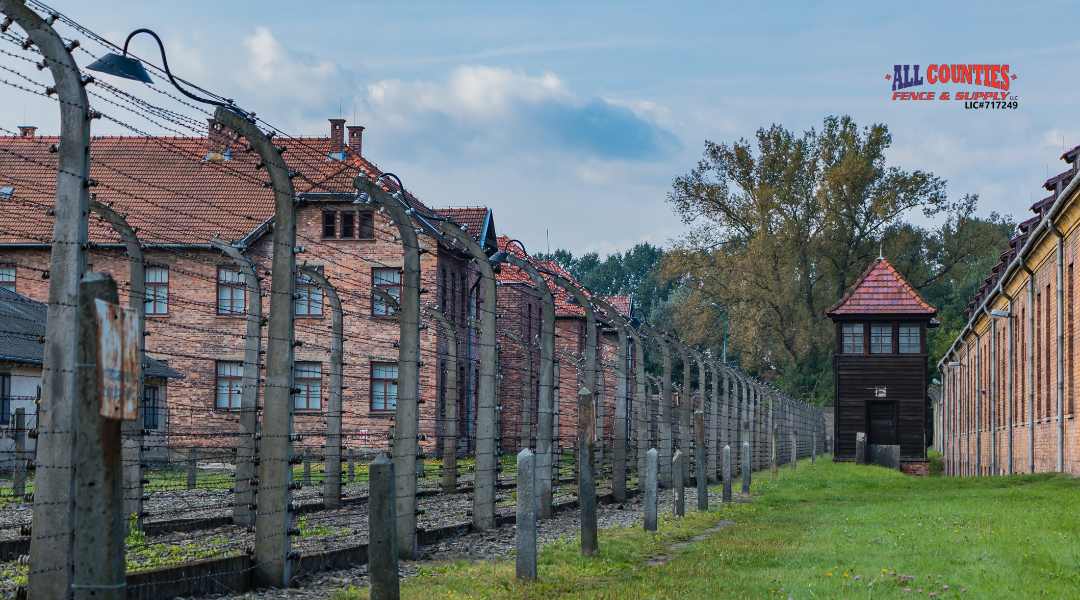
When planning your fence installation, keep these common mistakes in mind to ensure a successful project.
1. Inadequate Planning
Failing to plan adequately can lead to issues down the road. Create a detailed plan that includes measurements, materials, and local regulations.
2. Inaccurate Measurements
Precise measurements are crucial. Double-check your dimensions to prevent gaps or misalignments in your fence.
3. Ignoring Local Regulations
Familiarize yourself with local zoning laws. Not adhering to these can result in fines or the need to remove your fence.
4. Choosing the Wrong Materials
Select materials that suit your climate and property. Different materials have varying durability and maintenance requirements.
5. Poor Post Placement
Ensure your fence posts are set deep enough and spaced correctly. This provides stability and strength to your fence.
6. Neglecting Soil Conditions
Soil type affects the installation process. Test your soil to determine the best approach for stable post placement.
7. Skipping the Final Inspection
Always conduct a final inspection after installation. Look for any necessary adjustments to ensure every aspect meets your expectations.
By being aware of these mistakes, you can enhance the quality and longevity of your fence installation.
Call To Action: Get Your Fence Installed The Right Way
Installing a fence can be a straightforward process if you approach it with the right knowledge and preparations. To ensure your fence is done correctly, consider the following steps:
- Research Local Regulations: Check local building codes and zoning laws. Understanding these can save you from potential fines or needing to redo work.
- Measure Accurately: Take precise measurements of your property. Mistakes in measurements can lead to costly adjustments later.
- Choose Quality Materials: Select materials that suit your needs and climate. Consider durability and maintenance requirements.
- Consider Soil Type: Understand how your soil composition may affect post stability. This knowledge can impact the longevity of your fence.
- Hire Professionals: If in doubt, hiring experienced installers can save you time and ensure your fence is built to last. Professionals understand the nuances of installation that can be easily overlooked.
Implementing these steps will help you avoid common pitfalls.
Taking the right measures will lead to a successful fence installation that enhances your property value and aesthetics.

